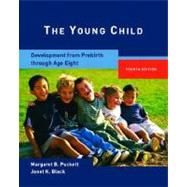
| An Overview of Early Childhood Development | |
| The What and Why of Early Childhood Development | |
| The Where, When, and How of Early Childhood Study and Assessment | |
| The Child'S Life Begins | |
| The Family Before Birth | |
| The Child and Family at Birth | |
| Infancy | |
| Physical and Motor Development of the Infant | |
| Psychosocial Development of the Infant | |
| Cognitive, Language, and Literacy Development of the Infant | |
| The Young Child: Ages One Through Three | |
| Physical and Motor Development: Ages One Through Three | |
| Psychosocial Development: Ages One Through Three | |
| ognitive, Language, and Literacy Development: Ages One Through Three | |
| The Young Child: Ages Four Through Five | |
| Physical and Motor Development: Ages Four Through Five | |
| Psychosocial Development: Ages Four Through Five | |
| Cognitive, Language, and Literacy Development: Ages Four Through Five | |
| The Young Child: Ages Six Through Eight | |
| Physical and Motor Development: Ages Six Through Eight | |
| Psychosocial Development: Ages Six Through Eight | |
| Cognitive, Language, and Literacy Development: Ages Six Through Eight | |
| Epilogue | |
| Glossary | |
| References | |
| Appendixes | |
| Author Index | |
| Subject Index | |
| Table of Contents provided by Publisher. All Rights Reserved. |
The New copy of this book will include any supplemental materials advertised. Please check the title of the book to determine if it should include any access cards, study guides, lab manuals, CDs, etc.
The Used, Rental and eBook copies of this book are not guaranteed to include any supplemental materials. Typically, only the book itself is included. This is true even if the title states it includes any access cards, study guides, lab manuals, CDs, etc.